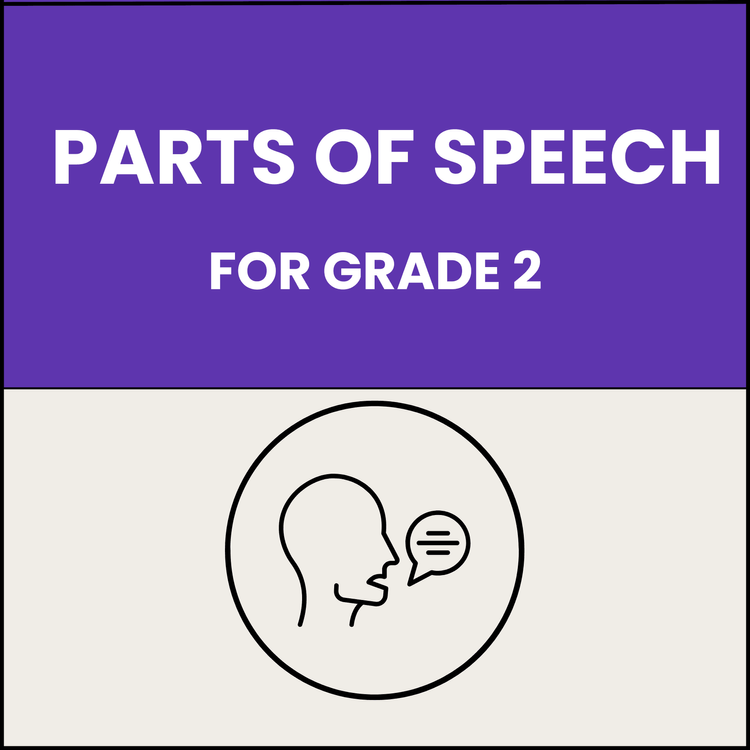Types of Parts of Speech in English Grammar with Examples

English grammar is built on the foundation of parts of speech, the essential elements that shape every sentence we use. Understanding the different types of parts of speech helps improve writing, speaking, and comprehension skills.
From nouns and pronouns to verbs, adjectives, and more, each plays a unique role in communication. In this guide, we’ll explore all parts of speech with clear definitions and practical examples to make grammar easier and more effective for learners.
Types of Parts of Speech
Traditionally, English grammar identifies eight main types of parts of speech. These are the building blocks of every sentence and include:
Noun – names of people, places, or things
Pronoun – words that replace nouns
Verb – words that express actions or states
Adjective – words that describe nouns or pronouns
Adverb – words that modify verbs, adjectives, or other adverbs
Preposition – words showing relationships between nouns or pronouns and other words
Conjunction – words that connect phrases, clauses, or sentences
Interjection – words expressing strong emotions
Some modern grammarians also consider determiners (like a, an, the, this, that) as a separate category, bringing more clarity to sentence structures.
Understanding each type and its function helps you use words correctly and form clear, grammatically accurate sentences. In the next section, we will explore each type of part of speech in detail, with easy-to-understand examples.
What are Parts of Speech?
In simple terms, parts of speech are categories that classify words based on how they function in a sentence. Just like bricks build a house, parts of speech build a sentence by giving structure, meaning, and clarity.
Every word you use in English grammar falls under a part of speech. For example:
Riya runs fast. → “Riya” is a noun, “runs” is a verb, and “fast” is an adverb.
By knowing the role each word plays, you can easily identify how sentences are formed and how words connect with one another. This makes learning grammar rules, writing essays, or even speaking fluently much easier.

Types of Parts of Speech in English Grammar - Explained
Understanding the types of parts of speech is essential for constructing correct sentences. Let’s explore each type with clear definitions and examples.
1. Noun
Definition: A noun is a word that names a person, place, thing, or idea.
Types of Nouns:
Common Noun: general names (dog, city, book)
Proper Noun: specific names (Riya, London, Harry Potter)
Abstract Noun: names of ideas or feelings (happiness, freedom)
Collective Noun: names a group (team, family, class)
Examples:
The dog is playing in the garden.
London is a beautiful city.
She felt happiness after completing the project.
2. Pronoun
Definition: Pronouns replace nouns to avoid repetition.
Types of Pronouns:
Personal Pronouns: I, you, he, she, we, they
Demonstrative Pronouns: this, that, these, those
Interrogative Pronouns: who, what, which
Relative Pronouns: who, whom, whose, which, that
Examples:
Riya is my friend. She is very kind.
I don’t know who called me yesterday.
3. Verb
Definition: A verb shows action or state of being.
Types of Verbs:
Action Verbs: run, write, eat
Linking Verbs: am, is, are, was, were
Auxiliary Verbs: have, has, do, does, will
Examples:
She runs every morning.
He is a teacher.
They have finished their homework.
Give your child the gift of confident communication with a free PlanetSpark demo today.
4. Adjective
Definition: Adjectives describe or modify nouns and pronouns.
Examples:
She has a beautiful dress.
He is a smart student.
Tips: Adjectives often answer questions like What kind? Which one? How many?
5. Adverb
Definition: Adverbs modify verbs, adjectives, or other adverbs.
Types of Adverbs:
Manner: slowly, quickly
Time: now, yesterday
Place: here, there
Frequency: always, often
Degree: very, too
Examples:
She runs quickly.
He is very intelligent.

6. Preposition
Definition: Prepositions show the relationship between a noun or pronoun and other words in a sentence.
Examples:
The book is on the table.
He walked to the park.
Tip: Common prepositions include in, on, at, by, with, under, over.
7. Conjunction
Definition: Conjunctions connect words, phrases, or clauses.
Types of Conjunctions:
Coordinating: and, but, or, so
Subordinating: because, although, since
Correlative: either…or, neither…nor
Examples:
I like tea and coffee.
She stayed home because she was sick.
8. Interjection
Definition: Interjections express strong emotions or sudden feelings.
Examples:
“Wow! That’s amazing.”
“Oh! I forgot my book.”
Extra Category: Determiners
Many modern grammarians consider determiners as a separate category of words that help specify nouns. Determiners give clarity about which or how many items are being referred to.
Common Determiners:
Articles: a, an, the
Demonstratives: this, that, these, those
Possessives: my, your, his, her
Quantifiers: some, many, few, several
Examples:
I have a book and the pen.
These apples are fresh.
She lost my keys.
Determiners often appear before nouns and make sentences more precise and understandable.
Summary Table: Types of Parts of Speech with Examples
| Part of Speech | Definition | Example |
|---|---|---|
| Noun | Names a person, place, thing, or idea | Riya is reading a book. |
| Pronoun | Replaces a noun | She is my friend. |
| Verb | Shows action or state of being | He runs every morning. |
| Adjective | Describes a noun or pronoun | She has a beautiful dress. |
| Adverb | Modifies verbs, adjectives, or other adverbs | He runs quickly. |
| Preposition | Shows relationship between words | The book is on the table. |
| Conjunction | Connects words, phrases, or clauses | I like tea and coffee. |
| Interjection | Expresses sudden emotion | Wow! That’s amazing. |
| Determiner | Specifies a noun | These apples are fresh. |
Importance of Understanding Parts of Speech
Knowing the types of parts of speech is more than just a grammar lesson—it’s essential for effective communication. When you understand how each word functions in a sentence, you can:
Construct clear and meaningful sentences without confusion.
Improve your writing skills for essays, emails, and reports.
Speak English fluently and accurately, avoiding common grammatical errors.
Excel in exams and competitive tests, where grammar rules are frequently tested.
By mastering parts of speech, you gain confidence in both written and spoken English, making it easier to express ideas precisely and professionally.
Strengthen Parts of Speech Skills with PlanetSpark
Mastering parts of speech is the first step toward clear communication, and PlanetSpark makes grammar learning both fun and effective. Through guided lessons and interactive practice, children develop a strong command of English while building confidence in writing and speaking.
Why Choose PlanetSpark for Grammar Learning?
Interactive Sessions – Fun, activity-based classes that simplify grammar concepts.
Expert Mentorship – Personalized guidance from experienced mentors.
Vocabulary & Sentence Skills – Strengthens word knowledge and sentence formation.
Writing Improvement – Enhances speed, accuracy, and overall clarity in writing.
Confidence Boost – Builds fluency and confidence in both spoken and written English.
Give your child the PlanetSpark advantage in English. Book a free demo and start learning!
Conclusion
Understanding the types of parts of speech in English grammar is the key to mastering the language. Each category, nouns, pronouns, verbs, adjectives, adverbs, prepositions, conjunctions, interjections, and determiners, plays a unique role in forming meaningful sentences.
By learning their definitions, functions, and examples, you can improve your writing, speaking, and comprehension skills. Regular practice and usage will help you recognize these parts naturally, making your English more accurate and expressive. Start observing the words around you, identify their parts of speech, and apply them correctly in your sentences to become a confident communicator.
Frequently Asked Questions
The 8 main parts of speech are noun, pronoun, verb, adjective, adverb, preposition, conjunction, and interjection. Each plays a specific role in sentence formation.
Parts of speech help structure sentences correctly, making communication clear, effective, and grammatically accurate.
Yes. Some words can function as different parts of speech depending on context. For example, “run” can be a verb (I run daily) or a noun (I went for a run).
Practice identifying words in sentences, use examples, and revise regularly. Interactive learning, like PlanetSpark classes, can make this process easier for kids.
Yes. Articles are often classified under determiners, which specify nouns and are sometimes considered a separate part of speech.
Knowing each part of speech allows you to construct grammatically correct sentences, use words appropriately, and communicate ideas clearly.
Download Free Worksheets
Personalized Communication Report
Record a video to get a AI generated personalized communication report for your child

Hi There, want to try these
tips for your child with
LIVE with our expert coach?
Let's check your child's
English fluency


